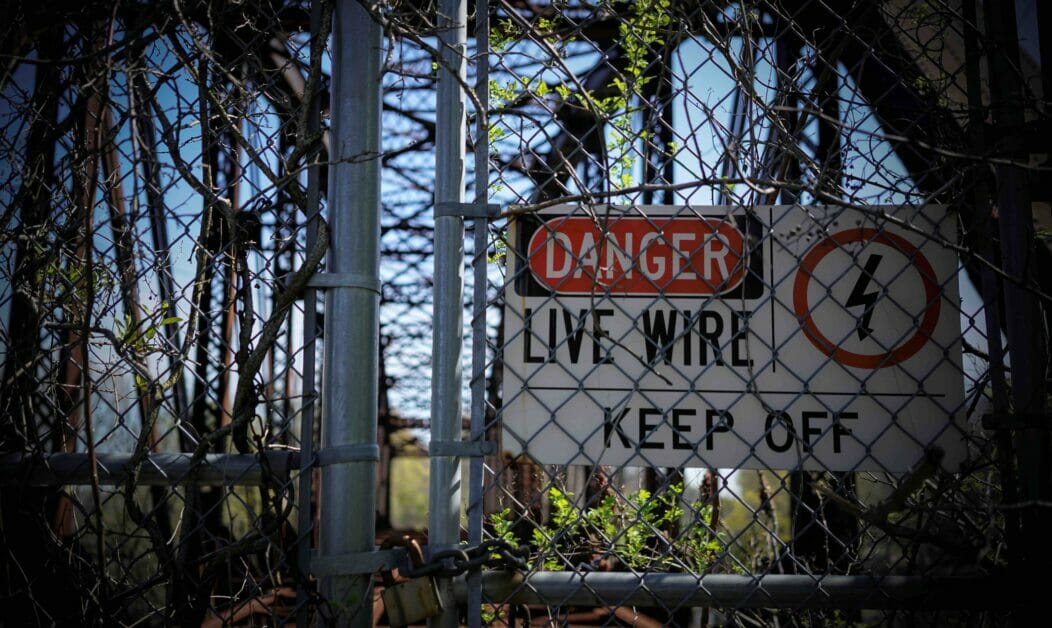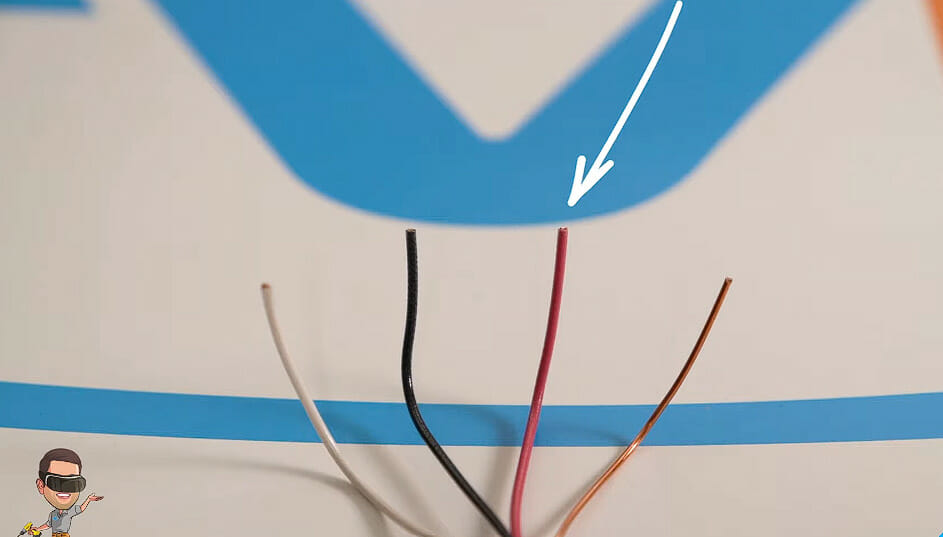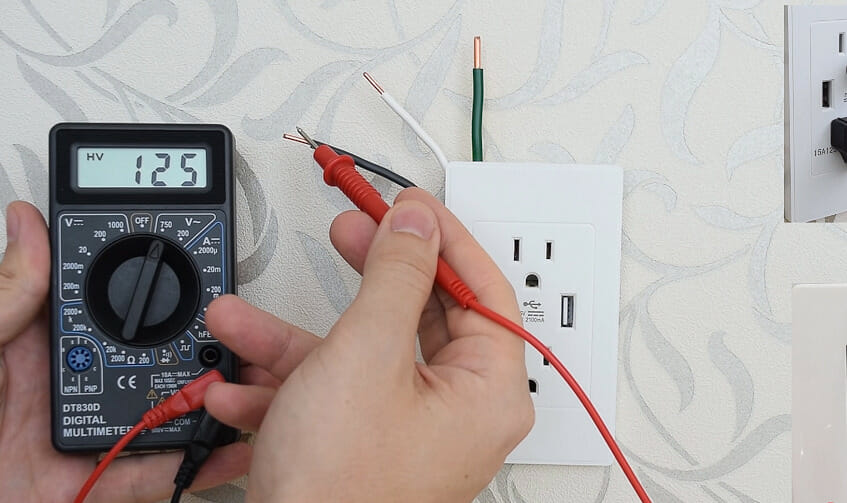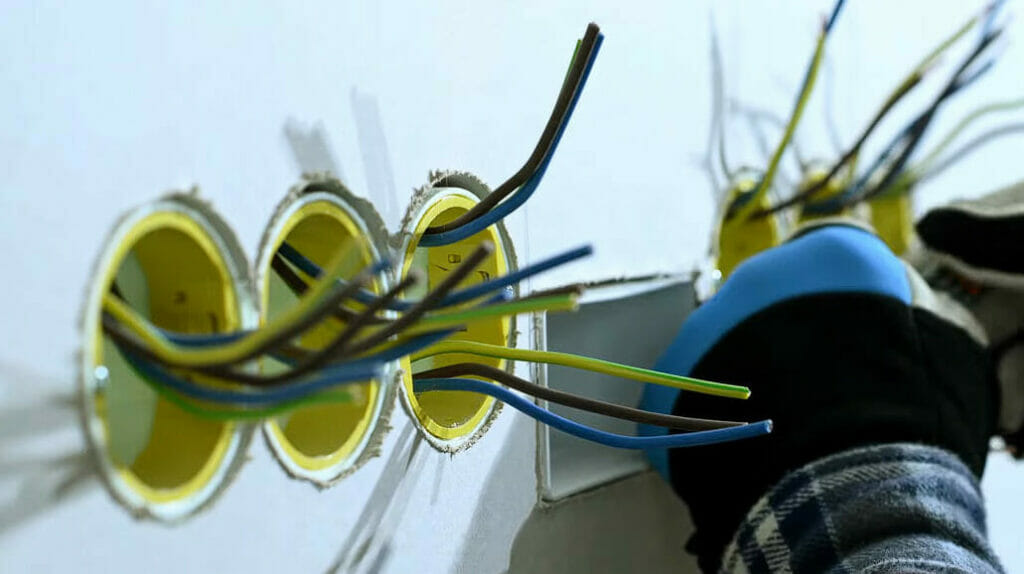What is the Color of a Live Wire? (Code Standard)

A live wire, it’s the vital link carrying electricity from power sources to our homes and devices. Knowing these wires’ color codes is practical and can be lifesaving.
Wiring color codes vary by region, with black and red denoting live wires in the U.S., brown or blue in Europe, and brown or red in Australia and Asia. But as usual, colors may still vary given some circumstances, so always consult local guidelines.
That said, below is a detailed guide for live wires.
The Color Code Standard

Let’s delve deeper into the world of color codes, where hues mean more than meets the eye. First, the National Electrical Code (NEC) ensures safety and order in electrical installations.
The NEC has established specific color standards for wires, each denoting a different function.
In these standards, black and red wires are commonly designated as “hot” or “live,” carrying current from the power source to the load.
One important thing to understand is that these color codes are not a worldwide standard. Different regions have their systems.
For instance, if you’re in the United States like me, a black wire is generally live.
However, if you find yourself in Europe, you’d discover that their live wires are typically brown or blue.
The story continues similarly in Australia and Asia, where color coding standards are distinct from ours.
So, here’s a crucial tip: when dealing with electrical installations outside your home region, be aware that the color codes may vary.
Always check the regional standards to avoid potential hazards. Always remember that safety is paramount when dealing with electricity, and different colors serve different functions in this essential safety measure.
Expanding on Color Coding
In the U.S., while black and red are typically used for live or “hot” wires, other colors can be employed based on the situation or the specific type of electrical system.
In fact, for a more complicated wiring system, such as three-phase electric power, black, red, and blue are used for the three phases. In addition, for DC power, red is typically used for positive, black for negative, and white for grounded negative.
The color of the wire is often an indicator of its purpose in the circuit.
In some cases, as pointed out, blue and yellow wires can also serve as live wires:
- Blue Wires: In the U.S., blue wires are sometimes used by travelers, most often in three- or four-way switches, where the light is controlled from multiple locations. In other situations, blue and yellow wires are used as live wires pulled through a conduit, in which case you’ll find them in commercial or industrial applications rather than residential.
- Yellow Wires: Yellow wires are also potentially live and often used for switch legs to ceiling fans, structural lights, and outlets paired with light switches. It’s worth noting that while yellow cables are used for switch legs, they can also be used as live wires in certain 480/277V electrical systems.
Remember, these color standards can vary greatly, especially in older houses or where a different standard was used during installation. Hence, it’s always crucial to double-check, preferably with a multimeter, and never make assumptions based on color alone.
Identifying Live Wire Using a Multimeter

Identifying live wires through their color may not always be the best practice. Thus, identifying a live wire with a multimeter can be incredibly useful when handling electrical work.
Here’s a multimeter to confirm if it’s a live wire:
Safety Measures: Safety is paramount when dealing with electricity. Always wear insulated gloves and safety glasses, ensure your tools are insulated, and avoid standing in wet areas to prevent accidental shocks.
- Prepare Your Multimeter: Begin by setting your multimeter to measure voltage. This is typically indicated by a “V” on the multimeter dial. If there are options for AC and DC, ensure you have selected AC for household wiring.
- Identify the Wires: Identify the wires you wish to test. In a typical AC system, you’ll have a live (often red or black), neutral (often white or light blue), and a ground wire (often green or bare).
- Test the Wires: Hold the black (common) probe of the multimeter against the ground wire. Then, carefully touch the red (live) probe to the live wire.
- Read the Voltage: Check the multimeter reading. A live wire should typically show a voltage of around 120V or 230V, depending on your location. The wire might not live without voltage or a significantly lower voltage.
- Double-Check the Other Wires: Repeat the process with the neutral wire. The neutral wire should show a voltage close to zero compared to the ground.
Please note that working with electrical systems can be dangerous if you’re not experienced or confident. Always ensure the power is turned off before handling wires; consult a professional electrician if in doubt.
Live Wire Color in Different Regions
As mentioned, the color of live wires varies considerably across the globe. Let’s embark on an international journey to learn about the differences:
| Region | Live Wire Colors |
|---|---|
| United States | Here, live wires usually come in black or red. They may also be blue or yellow, depending on the specific type of electrical system. |
| Europe | In contrast, European live wires don a brown exterior. Blue is another option for live wires, particularly in three-phase systems. |
| Australia | The land Down Under employs brown and red for its live wires, aligning more closely with the European standard than the US. |
| Asia | Echoing the standards of Europe and Australia, Asia’s live wires are typically brown or red. |
Remember, these colors are generally standard but can vary based on the specific country, type of electrical system, and even the age of the building.
Always consult a local electrical expert or guideline when dealing with wires in an unfamiliar location.
Variances in Older Installations

With time comes change, and electrical wiring is no exception. If you are dealing with an older structure, the wiring within might not conform to current color standards.
This can be attributed to the fact that color-coding standards have evolved over the years, necessitating a closer examination.
Pre-1970s in the UK, for example, the landscape of wire color-coding was quite different. The live wire, the electrical artery pulsating with current, was marked by a red sheath. But remember, this was an era gone by.
Post-2004, a shift occurred, prompted by a need for harmonization with the IEC standard; the red live wire changed color.
The vibrant red faded into a more subdued brown, now the marker for live wires in modern UK installations.
Such variations in wire colors are a compelling reason to engage the services of a professional, particularly when dealing with older installations.
Expert electricians can navigate these changes, understand the nuances of historical color-coding schemes, and ensure safety. Regarding electricity, the adage holds – better safe than sorry.
Safety Measures and Precautions
Now, the most crucial part: safety. First up, leave the tricky stuff to the professionals.
If you’re not a trained electrician, don’t mess with wiring! When it comes to electricity, the stakes are high. Even a minor mistake could lead to a severe accident.
But suppose you’re a seasoned DIY-er or a professional electrician. In that case, always turn off the power at the source before you begin working. Use a voltage tester to confirm the wires are safe to touch.
And never, ever assume a wire isn’t live. Assume they’re all live until proven otherwise!
References
Organizations:
- NFPA: National Electrical Code. https://www.nfpa.org/codes-and-standards/
Books:
- “Electronics for Dummies 3rd Edition” by Cathleen Shamieh
Websites:
- Autodesk Instructables. https://www.instructables.com/
Video References
TVE
Electronics&Computers
Electro University
